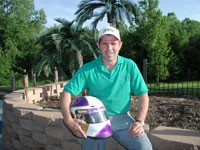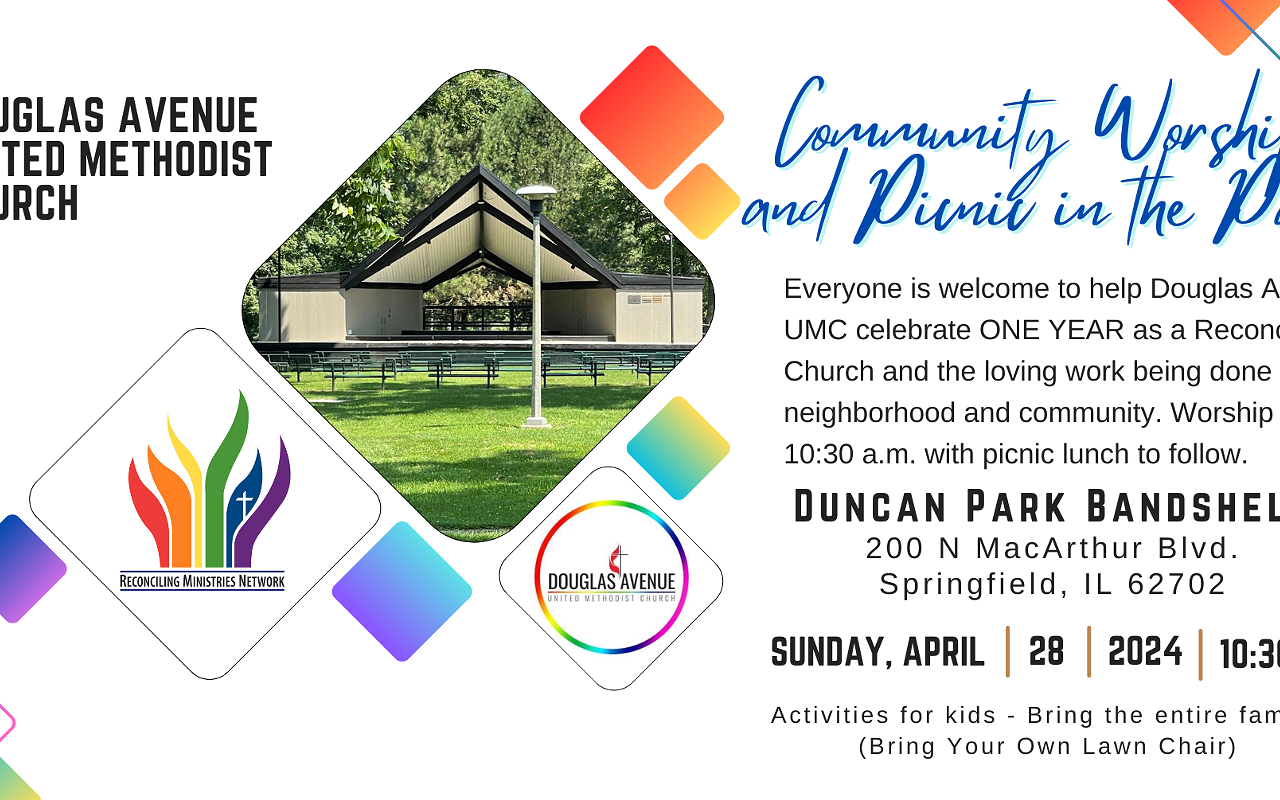Donnie Beechler knows what it's like to whip past a cheering crowd at 200 miles per hour. In the basement of his Springfield home, the three-time Indy 500 veteran has a mini museum documenting his racing career: Fire resistant suits stand next to Indy 500 helmets on pedestals. A coin-operated racing simulator allows guests to drive the Indy 500 course, which Beechler last competed in 2001. This year the 42-year-old Beechler will be watching the race from central Illinois. Writer John Jermaine talked to Beechler about his persistent need for speed.
"I've been a resident of this area all my life. I went to Springfield schools until junior high, then I went to Riverton, studied a year at Lincoln Land, joined the military, and was in the national guard for 6 years. I currently have two children--Shea is 4 and Coalton's 2--and have been married to my wife, Paula, for 6 years, though we've been together for 18 years. My hobbies are playing golf, fishing, and working around my yard.
"As I was growing up, we used to live over on South Wesley Street, on the east side, and Springfield Speedway, near the site of Kmart on Clearwater, was fairly close by. On Sunday nights, we could hear the races, and I wondered what was going on. My father started taking us, and from then on we would just walk on over to the track. As a boy, that was it. I just wanted to get involved in the whole racing thing. But I was in my late teens or early 20s before I started racing competitively in a Winn street car. I was lucky to get into the sport at all because my father wasn't a driver. Financially, we couldn't do it either. So I had to take out a $5,000 personal loan at the bank to buy my first race car. That was how I got started. Nowadays it's hard to find a rear end of a car for $5,000.
It was a Sprint car with a V-8 Chevy engine, nothing fancy. It didn't even have power steering in it. A year or two before, they had just started putting the wings, or air foils, on top to hold the cars down on the track. I came in with relatively no experience and ran my first race in Springfield. I only know a few racers who started out like I did in this area, working our way up from the dirt tracks.
I worked my car for 2 years out of my own pocket, before I picked up some guys who were just owners. And I've been driving for people ever since. On average I make 40 percent of the prize money. I drove Sprint cars for the longest time, probably 8 years, before I ran anything else: Midgets or the Silver Crown dirt cars at the Fairgrounds. In Silver Crown racing, the cars have unusual starters on them--it takes about three or four batteries together to turn one of these over because of the compression, so you don't have any onboard batteries. They also carry oversized fuel tanks, holding up to 55 gallons of methanol instead of gasoline.
My first introduction to the Indy cars was in 1998. Larry Cahill, a long-time Midget racer and car owner, called me up out of the blue. He said, "Hey, I just bought an Indy car team. Would you be interested in driving it for me?" So I never had any rear engine experience before, and that was the first time I had ever sat in an Indy car. To that point in time, the fastest I had ever been was around 150 miles per hour. It was tough to go over the 200 mark because it's all in your car. When your car isn't handling right, you don't go ahead and push it any harder. However, if the car is handling well and feels good, my best guess is it will take an additional push.
Right now, Indianapolis has guidelines of cubic inchs on the motor that you have to run. Then they have a tech group of people who make sure that everyone on the track is equal. But wing angles on the back can be anything you want. When we go to Texas, Kansas City, and up here at Joliet to some of the bigger speedways, they implement a 6-degree slant on the rear wing and a 1-inch wicker. A wicker is a piece of metal that goes across the back of the wing, with a 1-inch 90-degree upward bend on the edge. And all it does is catch air. You will be amazed at what a 1-inch piece of metal will do to an Indy car as far as killing the speed on it. In Texas, we were running average speeds of 225 miles per hour. On that mile-and-a-half track with the 9-degree banking, you almost get a little vertigo from the G-forces and stuff. It is really hard to concentrate at those speeds.
At Indianapolis, when I was driving for A.J. Foyt, I qualified at 224 miles per hour. I was actually creating lift on the back of the car just to help it get through the corners. And that's a scary feeling because you enter turn one at 225--you have to hold the throttle down and learn how to trust your car. Indianapolis is the only track that you can get away with running any wing angle you want to run. I may use a 1/16 or an 1/8 wicker, just a little bit, while some guys don't run with any wickers. It depends on how far you wish to push the envelope.
At Indianapolis, 10 to 12 seconds is a good pit stop. Everyone has their job, and everything is done in a planned succession. Pit stops actually get longer as the race goes on. Here's the reason: When you initially pull into the pits, you have quite a bit of fuel in your tank, but as the race progresses that fuel load goes down and it takes longer to fill the tank. And the fuel guy will never beat the tire guys because they can change a tire in 4 seconds. So if you could get the fuel in faster, you could make a quicker pit stop.
Each team has an engineer and a crew chief. In Foyt's situation, he was everything. So he pretty much controlled the strategy in the race. He is a four-time Indy winner, knows about the race car and what it does out there in different places. I could make suggestions. I didn't try to engineer the car because I am not an engineer. My job was to do the driving. But if the car was doing something that I didn't like or it was not supposed to do, I just relayed the information back to him and he determined what changes, if any, needed to be made.
I'm very thankful for the opportunity A.J. Foyt gave me in 2001. I didn't have a car to drive that year, so he put me in one and kept me going the rest of the season. Then he signed me to a good contract in 2002, which came to a halt after a crash in Homestead, Texas. He's a businessman and knows what it takes to run these machines. Maybe I got a shaft from him, yes and no. Maybe he could have gone about it differently--he can have a heart the size of Illinois, but he also has a temper to go along with it. He's said a few choice words on the radio to me a few times, but I still respect him. We're still friends. I could work with him again.
My Indy car career is naturally the highlight of my career. When Larry put the first deal together, there was only one guy on our team that had any Indy car experience. We were standing there just kind of scratching our heads: 'So that's what an Indy car looks like.' We were as green as they came (laughs). Unless you are at the speedway and see these cars in person, you can't get a feel for how fast they really go. In an Indy car, it's 20 percent driver. If you have a race car that will go around the track, a good engineer, and a good team, you will do well.
I didn't know what I was supposed to be feeling. Johnny Rutherford, who's a three-time Indy winner, kind of schooled me on things. "Once you get comfortable in your car", he said, "then you will be all right." But you never get truly comfortable on that track. It's unbelievably fast, the straightaways are so long, and one tiny mistake can cost you a car, or even your life.
In 2001, we almost did it. We started in 24th position. And with 15 laps to go, I was running fifth in the fastest running car on the track. Then I broke an oil fitting, putting me out of the race. I never realized it at the time, but when A.J. called me a few days later they had done spreadsheets on the laps--from the first one to the end of the race. We had the fastest laps of all three of his cars. And then when you compare that data to all the cars in the race, we were in the top three fastest cars on the track. So I knew I had a great car because I was running flat out all the way around and gaining on other cars. We even went by the guy who won the race. But a small mechanical device shut us down. So I finished 23rd.
I turned a car upside down during my second race at Indianapolis. I don't know how I did it, but I have a picture of the car sliding down the track. It junked the car, so Larry had to buy a whole new car for a couple of hundred thousand dollars. Somehow we managed to save the steering wheel and a few in the instruments. That was it.
I believe in luck, but I think you can make your own luck--by the careful preparation of the car, some of the moves you make out on the track. I remember someone asking me how many "close calls" I had during a season. I told him prabably 100 per race. If they mean I almost crashed here and there, and I narrowly avoided that piece of debris sort of stuff, it's a 50 percent deal. You cannot run at 220 and not have close calls. However, I believe in fate more than luck. I don't carry a rabbit's foot with me in the car. I say a little prayer before each race, but I always feel that the race has already been run. And whatever is going to happen has already happened.
I was actually ready to retire from the sprint car racing before the Indy car deal came along. And I could have walked away from racing a lot easier before I drove an Indy car. I feel I have fulfilled my need in everything I was doing over the years, riding the dirt tracks around the country. I really treasure that phase of my life. But when you get the opportunity to go on to the very top level and race, you really get that taste where you want to continue on. And that was what kept me going. We'd moved to another level, and I really don't want to take a step backward.
Everybody asks me these days, "I haven't seen you racing lately. Did you quit racing? Are you retired or what?" I'm not retired, and I'm not racing because there is no funding. We've sent countless purposals out to people. But with the economy like it is right now, the war, and stuff like that, it is very tough to spark any interest in auto racing.
In the meantime, I have plenty of rental property in the Springfield area, and I spend as much time with my family as possible.

















